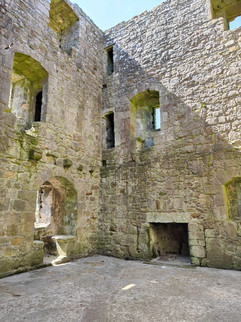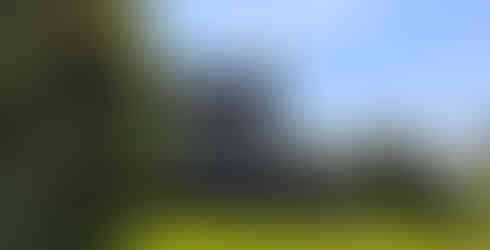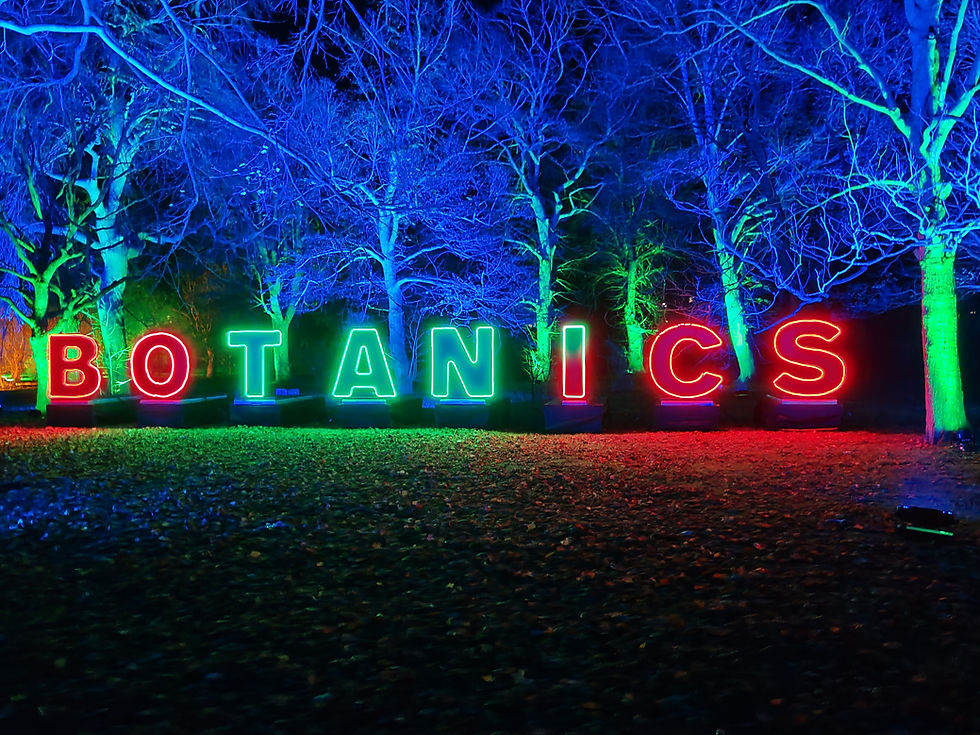Lochleven Castle: The Towering Fortress That Held Mary Queen of Scots Captive
- Wee Walking Tours

- Aug 6, 2023
- 9 min read

Lochleven Castle is an imposing fortress situated on an island in the middle of Loch Leven, a serene and picturesque freshwater loch (the Scottish word for ‘lake’). The Castle has been the site of many significant events throughout Scottish history, including serving as a royal residence, a military garrison, and a prison. This article has a little bit of everything including an exploration of the fascinating history and intriguing stories that surround Lochleven Castle- with descriptions of two very different boat rides (one serene and one dangerous). So, pop on your life jacket because we’re headed out onto the beautiful waters of Loch Leven, Scotland!
Historical Overview
Although Lochleven Castle is best known as the towering fortress that held Mary, Queen of Scots captive in 1567, there is a rich history that predates her time there. Historic Scotland describes the Castle as “among the most important medieval monuments in Scotland”.
Built in the 14th century, Loch Leven Castle was originally owned by the Douglas family, who were one of the most powerful families in Scotland at the time. The Castle was strategically located on an island in the middle of the loch, which made it an ideal location for a fortress. In fact, the impressive Curtain Wall is said to have been built in 1300, making Lochleven one of the oldest stone castles in Scotland. Additionally, the Castle’s Tower House is also among the oldest in the country as it was most likely built in the early 1300s.

Mary isn’t the only famous Scottish royal to have stayed at Lochleven Castle, King Robert the Bruce stayed there in the months leading up to the Battle of Bannockburn. In fact, he was the first to use it as a state prison.

Over the years, the Castle was expanded and improved, with new towers, walls, and living quarters added to accommodate the growing power and influence of the Douglas family.
In the 16th century, the ownership of the castle changed hands several times, with ownership passing from the Douglases to the Crown, and then to the powerful Scottish nobleman Sir William Douglas of Lochleven. It was during Sir William's ownership that Mary, Queen of Scots first came to the Castle as his guest on a few occasions. However, her last visit was definitely not voluntary as it was where she was infamously imprisoned (hold tight because we will return to this tale in more detail in just a bit).
After Mary's imprisonment, Lochleven Castle underwent a series of transformations that shaped its history into what it is today. The Castle was later confiscated by the Scottish crown and used as a military garrison for many years. In 1675, the castle was sold to Sir William Bruce of Balcaskie (who was the architect for the Palace of Holyroodhouse). Bruce also bought the Douglas’ estate across the Loch from Lochleven Castle and built Kinross House. The House was purposely designed so that it would have a view of Lochleven Castle.
Interestingly, the ruins of Lochleven Castle were already a tourist attraction by the middle of the 1700s as people flocked to see where Mary Queen of Scots had been imprisoned. Yet, it wasn't until 1939 that the Castle was transferred to the care of the State. Today, Lochleven Castle is an Historic Environment Scotland site, and visitors can explore its ruins and learn about the history of the area through guided tours. Which brings us to the next part of our journey as I describe a bit of our own ‘explore and discover’ mission that we recently undertook on Loch Leven.
A Journey to Lochleven Castle
To get to Lochleven Castle you must, of course, do so via boat from Kinross Pier. We highly recommend you book in advance, as we did, to ensure a spot on the boat which has limited spaces available. After we checked in at the Historic Scotland reception, we made our way out to the dock to await our departure.

Standing on the dock, the scene across Loch Leven was incredibly serene and simply stunning. We couldn’t have asked for a more beautiful day for our journey to Lochleven Castle. It was so relaxing to just take a quiet moment to truly appreciate and enjoy the impressive surroundings. Mother nature was in incredible form that day!

As we stepped onto the Mary Seton, we quickly found our seat and excitedly waited for our journey to begin (as a side note- Mary Seton was one of the famous ‘4 Marys or Maries’ who accompanied Mary Queen of Scots to France and spent their childhood with her in the French court).
An Historic Scotland staff person takes visitors across the Loch and provides a nice overview of some of the history and points of interest throughout the short boat trip. Sami and I were both fortunate to spend a great deal of our childhoods on lakes. Therefore, we always get a bit of a nostalgia when we get the chance to venture out on a boat. There is little that can match the joy of being on the water, breathing in the fresh air, and taking in all that nature has to offer.

On our trip across Loch Leven, we were able to get a good look at Kinross House (that I mentioned earlier). Apparently, visitors can now stay at the house, but the stipulation is that they have to rent out the entire house! I can’t fathom how much that must cost. Our guide told us that Harry Styles stayed there just a few days before during his recent concert in Edinburgh. He’s sure living a life of luxury that most of us can only imagine. The rest of us will have to settle for a beautiful boat ride and views of the House from a distance.

As you approach the island and get a glimpse of Lochleven Castle, you are immediately struck by its imposing stone curtain walls juxtaposed with the breath-taking natural surroundings. Interestingly, the island and Castle would have looked much more imposing during Mary’s day. That’s because the water level would have been quite a bit higher with the Castle and its gardens covering most of the island. However, the water in Loch Leven was lowered in the 1800s and the resulting larger island is seen today in the beautiful grounds that surround the Castle.

Stepping off our boat, we carefully made our way off the dock and got our first proper look at Lochleven Castle. What immediately stood out to me was how intact the Tower House appeared to be. It’s amazing to think that it was built in the early 1300s.

We walked up to the north curtain wall, and went through the entrance into the Castle’s inner courtyard. To your immediate left is the north range.


However, my eyes were drawn to another structure projecting from the south-east corner of the curtain wall- Glassin Tower. According to Historic Scotland, this impressive part of Lochleven Castle was built in the 1500s to provide additional accommodation and give the Castle more of an imposing appearance.

Once inside Glassin Tower, I was immediately transported back in time to a world of intrigue and drama, and could begin to imagine what life was like in medieval Scotland.
I could almost feel the weight of history bearing down on me. In fact, I started to feel lightheaded and it seemed as if my surroundings started to change as the missing floor and ceiling materialised...the Castle was returning to its former 1500s glory.
I rubbed my eyes in disbelief because I saw who I assumed to be Mary Queen of Scots and a man standing before me. I wasn’t sure what was happening- if I was seeing some sort of apparitions or perhaps it was the residual energy of such a significant historical event lingering through the ages. Despite my shock, my curiosity got the best of me, and I watched quietly as the following scenes unfolded before me.
Mary’s room was small and sparsely furnished, and she looked quite ill as she lay in her bed. The man seemed to be tending to her and trying to provide some comfort for Mary who was clearly in a state of deep sadness. Their quiet conversation revealed that the man was her doctor and Mary had just suffered a miscarriage of deux enfants (twins). It was obvious that this tragic event only added to her already considerable emotional distress she was feeling being held as a captive. Her doctor gave her something to drink that he said would help to calm her fragile state.
Suddenly the scene changed and two other men were with Mary and were yelling at her. They were saying that she was the one who was responsible for the murder of her husband, Lord Darnley, and that that is why she was being held captive. Mary vigorously denied plotting the death of Darnley and said she knew nothing about it. She pleaded with them to let her rest saying she was ill from an ‘incident’ she had endured only a few days prior.

However, the two men (who I now realised from my knowledge of history were the Protestant Lords of the Congregation- the infamous noblemen who, along with John Knox, were part of the alliance that rose up against her), outright refused to listen to Mary’s pleas. Instead, they said they were there to make sure that she signed the paper on the small desk before her- a Deed of Abdication. I watched in horror as they said that they would cut her throat if she didn’t sign the paper! I couldn’t believe I was witnessing the moment when Mary was being forced to abdicate in favour of her infant son, James (who was only a year old when he was taken from his mother upon her arrest).
In fact, this whole plan by the Lords of the Congregation was done so that they could be in power as they despised Mary for her Catholicism (and let’s be honest- the fact that she was a woman in power) and had chosen her Protestant half-brother, Lord Moray, to act as her son’s regent. How convenient for them. Weak from her miscarriage just a few days prior, and with her life being threatened, Mary had no choice but to sign and abdicate her rightful place as Queen of the Scots.
I watched as the scene faded once again, and this time it seemed that Mary was being moved out of Glassin Tower. I followed the ghosts of the past into the Tower House and up to the third floor.


The scene shifted again and Mary was praying in a small oratory in the east window of her room. Though she was the only one there, she spoke aloud her prayers of escape and freedom. After being imprisoned for almost a year, she longed to free herself and regain her rightful place on the throne. She wasn’t alone in this and there were those who still supported her. I listened as she discussed a plan that was risky and dangerous, but Mary was willing to take the chance. A short while later, I saw her disguise herself and slip out of the Castle, accompanied by her loyal servant, Willie Douglas.
I knew, without seeing it, what happened next as it is one of the most famous stories about Mary’s life. Her escape was not without its difficulties. Mary and Willie had to cross Loch Leven in a small boat, braving the choppy waters and the danger of being spotted by the Castle guards. Once they reached the shore, they had to evade pursuit and make their way to safety. But Mary's courage and determination saw her through, and she eventually reached the safety of her supporters' stronghold.

Mary's escape from Lochleven Castle was a turning point in Scottish history. It demonstrated her resilience and her determination to fight for her rights and her beliefs. It also inspired her supporters to redouble their efforts to restore her to the throne. Though Mary's reign was marked by turmoil and her life ended at the hands of her English cousin, Elizabeth I, her escape from Lochleven Castle remains one of the most dramatic and inspiring moments in Scottish history.
Despite being a bit exhausted with my ‘journey to the past’, I decided to continue on with my tour of the Tower House. Looking over at Mary’s oratory one more time, I found myself hoping that she at least found some small solace in her ability to maintain her faith while being imprisoned at Lochleven Castle.

With a heavy heart, I left Mary’s room, to check out the rest of the Tower.
After such a dark history, I decided that I needed to get some fresh air and sunshine, and exited Tower House to explore more of the Castle grounds. It’s sad to think that the west gable and wall footings are all that are left of the Great Hall.

When you visit Lochleven Castle, be sure to take the time to explore the magnificent grounds that surround the Castle. Here are some photos of our exploration to scroll through- the contrast of nature with the ruins was wondrous.
Before we knew it, our adventure was drawing to a close, and we needed to head to the dock to catch our boat back to the mainland. This time we boarded The Spirit of the Castle which- after my ghostly encounters with the past- felt only too appropriate. As our boat pulled away from the island, I took one last look up at the Tower House and silently bid goodbye to Mary and the ghosts that linger at Lochleven Castle.

Well, that is a wrap for this article. I hope you enjoyed reading a bit about the history of Lochleven Castle and our tour of the island. While, my 'ghostly' encounters may have been a trick of my imagination, my description of what happened to Mary Queen of Scots was all true and based on historical accounts. Mary is a frequent ‘guest’ on our blog, and if you are interested in reading more about her, please check out our articles on Christmas at the Palace of Holyroodhouse, Linlithgow Palace, and Edinburgh Castle.
Overall, a visit to Lochleven Castle is a must for anyone interested in Scottish history or medieval architecture. The castle's impressive size and stunning setting make it a memorable destination for visitors of all ages. As I previously mentioned, we highly recommend that you book your boat trip in advance to guarantee entry. Also, please note that the boat trips to LochLeven Castle are usually between mid-May until the end of October. Be sure to check out the Historic Scotland website for more the most up-to-date information on how to best plan your visit.
Until next time- Explore & Discover!





































